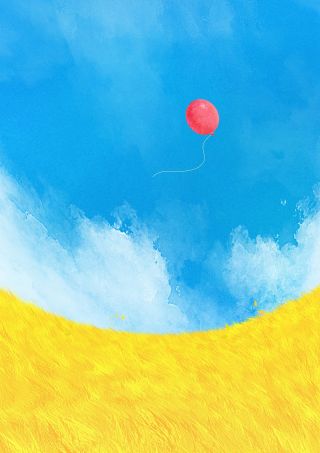Mindfulness & Mental Health
The Ultimate Guide to What Stands in Our Way of Being Happy
We work hard, achieve more, and still feel a quiet gap inside. So what actually stands in our way of being happy? In 2025, the real blockers are less about external success and more about how we think, feel, recover, and connect every day.
This guide breaks happiness into clear, practical elements so you can stop chasing vague "bliss" and start building whole-life well-being that lasts.
The Problem: Why Does Happiness Feel So Out of Reach?
You might recognize the symptoms:
- You hit a goal, feel good for 48 hours, then feel strangely empty.
- You compare your life to others online and conclude you're behind.
- You feel guilty for not being "grateful enough" or "positive enough."
- You wonder, quietly: "Is there something wrong with me?"
Recent well-being reports show rising anxiety and loneliness despite better technology, higher access to information, and endless self-help content (Harvard, 2024). The gap between how we think happiness works and how it truly works is widening.
"Happiness isn't a glitch-free life. It's the capacity to live fully with both joy and difficulty."
Understanding what truly stands way happy? is the first step in closing that gap.
What Actually Is Happiness? (Quick Definition for 2025)
For Routinova, happiness = whole-person well-being, not constant smiles.
In practice, it is the ongoing alignment of five interdependent elements:
- Spiritual: Meaning, values, and a sense of "why" beyond your to-do list.
- Physical: Sleep, movement, and nourishment that support your brain and mood.
- Intellectual: Curiosity, growth, and mentally engaging challenges.
- Relational: Supportive, honest, and kind connections.
- Emotional: Capacity to feel, regulate, and learn from both pleasant and painful emotions.
When these five are even moderately nourished, happiness becomes a side-effect of how you live—not a prize you chase.
What Stands in Our Way of Being Happy? (Short Answer)
Here is the concise answer many people search for:
The biggest obstacles to happiness are unrealistic expectations of constant positivity, overvaluing external success, numbing or rejecting difficult emotions, neglected basics like sleep and connection, and chasing happiness directly instead of building the skills and habits that support it.
Why Traditional "Happiness Hacks" Fail
Most approaches fail because they:
- Promise instant transformation ("Do this one thing to be happy") instead of building sustainable habits.
- Confuse success with happiness, assuming money, status, or aesthetics equal well-being.
- Shame normal emotions, turning sadness, anger, or anxiety into "personal failures."
- Ignore context, offering one-size-fits-all routines that don't match your culture, personality, or life stage.
Stanford researchers emphasize that lasting well-being functions more like a trainable capacity than a lucky mood spike. Shortcuts feel good briefly, but they don't rewire how you relate to your life.
Root Cause: The Myths That Quietly Block Your Happiness
Below are the core patterns that repeatedly stand in the way happy—subtle, but powerful.
1. The "Always Positive" Myth
We are sold the lie that happy people:
- Rarely feel low.
- Bounce back instantly.
- Can fix everything with a mantra.
In reality, emotionally healthy people experience a full range of feelings and allow them without self-attack. When you treat discomfort as a glitch, you add a second layer of suffering: shame for feeling human.
If you believe "I should be happy all the time," every normal fluctuation feels like failure.
2. The "Success First, Happiness Later" Trap
Another belief that stands way happy? is the equation: "Once I achieve X, then I'll be happy."
- Once I'm promoted.
- Once I look a certain way.
- Once I'm in the perfect relationship.
Research in positive psychology consistently shows: achievements provide a temporary high, but your mood returns to baseline unless your daily life supports depth, health, connection, and meaning.
3. The Direct Pursuit Problem
Waking up and thinking, "I must be happier today" creates pressure.
That self-monitoring ("Am I happy yet?") makes you more self-conscious and less present.
Instead of staring at the "sun" of happiness, we need the prism: specific habits and values that refract into well-being.
4. Emotional Avoidance and Numbing
We:
- Scroll instead of feeling.
- Stay busy instead of grieving.
- Joke instead of being honest.
Avoidance can feel like control, but it blocks growth, intimacy, and resilience. Over time, this emotional shutdown stands in our way of being happy more than any external event.
5. Neglecting the Basics (The Silent Blocker)
It’s not glamorous, but:
- Chronic sleep debt
- Constant notifications
- Sedentary days
- Ultra-processed food as default
all chip away at your psychological "immune system." You can't mindset your way to joy while your body is in survival mode.
People Also Ask: What Are the Biggest Barriers to Happiness?
Here is a featured-style answer:
The biggest barriers to happiness include unrealistic expectations of constant joy, tying self-worth to achievements, ignoring negative emotions, poor self-care habits, social comparison, and living out of alignment with personal values. Addressing these areas systematically leads to more stable, authentic well-being.
People Also Ask: Is It Normal to Feel Unhappy Even When Life Is Good?
Yes. It is common to feel flat or restless even when nothing is "wrong."
Often, this signals:
- Misalignment between your values and your schedule.
- Emotional fatigue or unprocessed stress.
- Lack of meaning, play, or challenge.
Instead of judging it, use it as feedback: something in your SPIRE elements needs attention.
The Routinova Framework: A Better Way to Pursue Happiness
Instead of chasing happiness directly, build Happiness Fitness across the five SPIRE dimensions.
Think of it as training your psychological immune system: you won't avoid all pain, but you recover faster, feel deeper meaning, and experience more frequent, grounded joy.
The SPIRE Blueprint (Featured Summary)
To move past what stands in our way of being happy, focus on:
- Spiritual alignment: Clarify what truly matters.
- Physical foundation: Support your brain and mood.
- Intellectual growth: Stay curious and engaged.
- Relational depth: Invest in quality connections.
- Emotional literacy: Allow, name, and work with feelings.
Step-by-Step: How to Apply This in Real Life
Start small. Choose one habit in each area. Keep paragraphs of your life short and clear.
1. Spiritual Well-Being: Define Your "Why"
Goal: Feel that your days point somewhere meaningful.
Try:
- Write 3 values that matter most (e.g., growth, kindness, creativity).
- Ask: "What is one small action today that reflects these values?"
- Do a 3-minute evening check-in: "Did I live even 5% closer to my values today?"
Example: A product manager adds "help someone learn" to each workday—mentoring a junior teammate. Happiness becomes embedded in the day, not postponed.
2. Physical Well-Being: Protect Your Biological Baseline
Goal: Make it easier for your mind to function.
Try (pick one for 7 days):
- Sleep: Fixed wake-up time, no matter what.
- Movement: 10–15 minutes of walking, stretching, or light exercise.
- Nutrition: One upgraded meal or snack with real, colorful foods.
Bold move: Treat these as non-negotiable mental health tools, not aesthetic projects.
3. Intellectual Well-Being: Feed Your Curiosity
Goal: Replace doomscrolling with growth.
Try:
- Read 5 pages of something that challenges or inspires you.
- Watch one high-quality talk or lesson instead of random clips.
- Learn a micro-skill weekly (e.g., journaling method, breathing technique).
This sparks intrinsic motivation, which is strongly linked to life satisfaction (Harvard, 2024).
4. Relational Well-Being: Upgrade the Quality of Connection
Goal: Feel seen, supported, and useful.
Try:
- Send one sincere message daily: appreciation, check-in, or encouragement.
- Schedule a "no-phones" 20-minute conversation once a week.
- Practice one small act of generosity: share knowledge, time, or help.
Example: A remote worker creates a weekly "deep talk" coffee with a friend. Loneliness drops; resilience rises.
5. Emotional Well-Being: Stop Fighting Your Feelings
Goal: Build capacity, not denial.
Try:
- Name it: "I feel anxious/jealous/tired," without judgment.
- Normalize it: "This makes sense given what I'm carrying."
- Next step: Ask, "What would support me by 5% right now?" (breathe, move, text someone, rest).
Stanford researchers highlight that emotional labeling and acceptance reduce distress and increase regulation over time.
People Also Ask: How Long Does It Take to Feel Happier?
You won't rebuild a life in a weekend, but you can feel meaningful shifts faster than you expect.
Typical (approximate) timeline when you consistently practice small SPIRE habits:
- 7 days: Slight lift in energy and clarity; less autopilot.
- 21–30 days: Noticeable mood stability; reduced overreactions.
- 60–90 days: Stronger sense of control, improved relationships, more moments of genuine contentment.
- 6–12 months: A new default: not "perfectly happy," but more grounded, resilient, and aligned.
The goal is not never feeling bad; it's trusting your ability to move through it.
Troubleshooting: When Happiness Still Feels Blocked
If you’re doing "all the right things" and still feel stuck, explore these areas.
1. Are Your Goals Actually Yours?
If your life is built on someone else’s definition of success, it will quietly stand in your way of being happy.
Ask:
- "If no one could see my life, what would I still choose?"
- "Where am I performing instead of living?"
2. Are You Overloaded?
Chronic overwhelm can mask any benefits from good habits.
- Audit your commitments.
- Say no to one low-impact obligation this week.
- Simplify: fewer goals, more depth.
3. Are You Avoiding Support?
Sometimes what stands way happy? is untreated anxiety, depression, trauma, or burnout.
Seeking professional support is not a failure of willpower; it's smart strategy. Use therapy, coaching, or support groups to process what self-help alone cannot hold.
4. Are You Expecting Instant Certainty?
Whole-person happiness is iterative.
Allow experiments:
- Try a new habit for 14 days, then adjust.
- Treat your life like a series of prototypes, not final exams.
People Also Ask: Can Happiness Coexist with Pain?
Yes. In fact, sustainable happiness requires it.
When you allow grief, stress, and disappointment while staying connected to meaning, support, and self-respect, you develop what many experts call psychological immunity. You become less fragile, more whole, and better able to notice moments of joy even in hard seasons.
A 2025 Reminder: Happiness Is Built, Not Found
In a world of highlight reels and quick fixes, it's easy to believe that something rare or secret stands in our way of being happy.
Most of the time, the obstacles are ordinary: myths, misaligned priorities, exhaustion, isolation, and the habit of running from our own emotions.
When you:
- Respect your body,
- Align daily actions with your values,
- Stay curious,
- Invest in real relationships,
- Let feelings be information, not enemies,
happiness stops being a distant destination. It becomes the natural outcome of a life lived fully awake.






